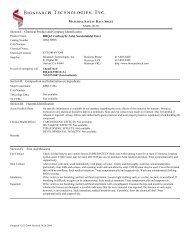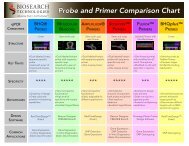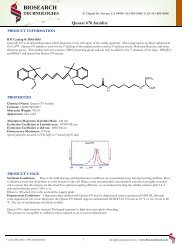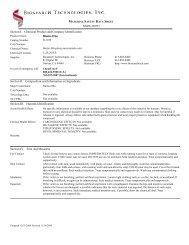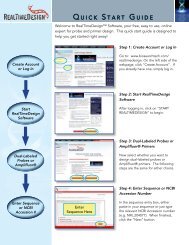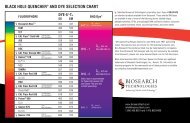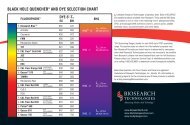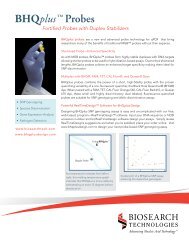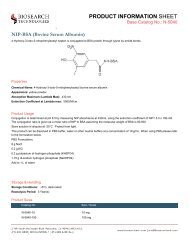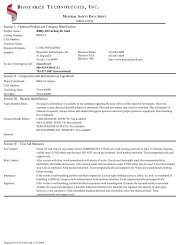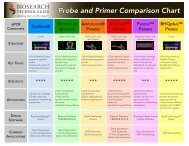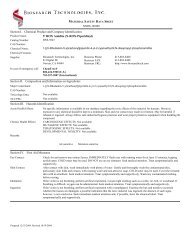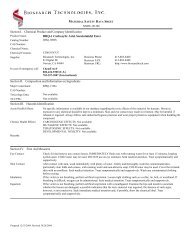Black Hole Quencher Dyes - Biosearch Technologies
Black Hole Quencher Dyes - Biosearch Technologies
Black Hole Quencher Dyes - Biosearch Technologies
Create successful ePaper yourself
Turn your PDF publications into a flip-book with our unique Google optimized e-Paper software.
They’re Here!<br />
<strong>Black</strong> <strong>Hole</strong> <strong>Quencher</strong>s<br />
• A NEW class of high-efficiency<br />
dark quenchers<br />
• Optimized for FRET — by design<br />
• <strong>Dyes</strong> that really go the distance<br />
• DABCYL eclipsed by BHQ dyes<br />
• TRUE dark quenchers — NO<br />
native fluorescence<br />
• Access visible into near-IR spectrum<br />
for reporting — 480 to 730 nm<br />
• Enable wider choice of reporter dyes<br />
for multiplexing<br />
• Wide variety of probe formulations<br />
A NEW class of highefficiency<br />
dark<br />
quenchers<br />
Custom-synthesized hybridization<br />
probes incorporate<br />
spectrally paired fluorophores<br />
and quenchers, each covalently<br />
linked to minimize interference<br />
with probe-target hybridization.<br />
The BHQ dyes are a new class of<br />
high-efficiency dark quenchers<br />
that prevent fluorescence until a<br />
hybridization event occurs. These<br />
powerful and highly specific<br />
dyes enable the identification<br />
and quantification of a variety of<br />
biomolecules.<br />
Optimized for FRET— by design!<br />
Hybridization probes are designed to take advantage of quenching by<br />
fluorescence resonance energy transfer (FRET) to detect and report binding<br />
to target molecules.<br />
Figure 2 The FRET Process.<br />
Figure 1 Hybridization event turns on<br />
fluorescence. BHQ dyes are compatible<br />
with linear probes and beacons on any<br />
real-time Q-PCR platform or end-point<br />
fluorescent plate reader.<br />
FRET is a highly distance-dependent interaction between a reporter dye in<br />
an excited state and a quencher in its ground state. Energy is transferred from<br />
one molecule (the fluorophore) to the other (the quencher) without the<br />
emission of a photon.<br />
In order for efficient FRET quenching to take place: a) the fluorophore and<br />
quencher molecules must be close to each other (approx. 10 - 100 Å) and,<br />
b) the absorption spectrum of the quencher must overlap with the emission<br />
spectrum of the fluorophore.<br />
Figure 3 Spectral overlap of BHQ-2 dye with TAMRA and ROX.<br />
Each member of the family of BHQ dyes was conceived and<br />
designed to maximize spectral overlap, thus increasing the<br />
efficiency of quenching.




